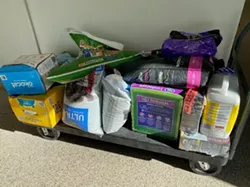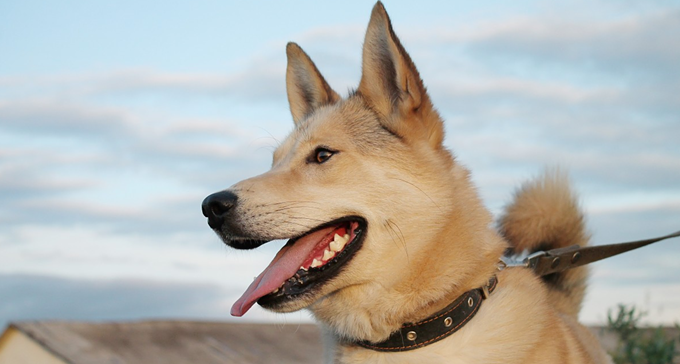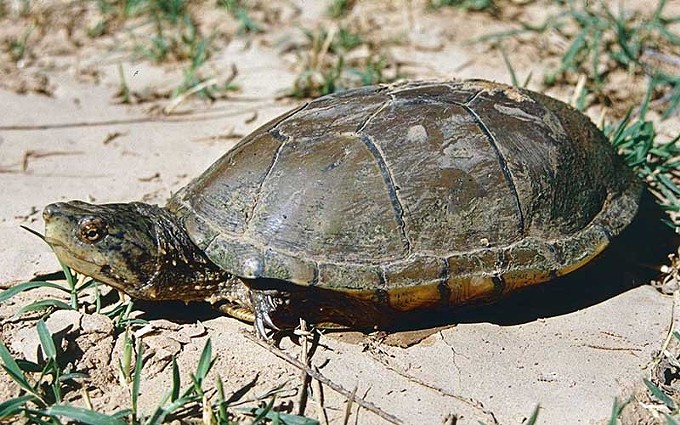Monday, April 12, 2021
PHOENIX – Nationwide lockdowns in the past year have driven demand for companionship from man’s best friend during the pandemic, and shelters across the country have seen spikes in dog adoptions and fosters. But some pricey and popular canines are being ripped away from their intended forever homes and sold to unsuspecting buyers.
It’s known as dog-flipping, a phenomenon that drew widespread attention after pop star Lady Gaga’s dog walker was shot and wounded and her two French bulldogs were stolen in February, according to the Los Angeles Police Department. The dogs were returned after the performer offered $500,000 as a reward, and the investigation continues into whether thieves targeted Gaga or just her valuable Frenchies.
Because pets are legally viewed nationwide as personal property, dog thieves generally have little to lose.
In Phoenix, dog theft reports are on the rise. In 2019, 137 pets were reported stolen, Sgt. Andy Williams told Cronkite News. In 2020, that number jumped to 155.
“Animals and pets are considered property, so with regards to theft there are no unique laws” for pet abductions, he said.
According to pet detective Karin TarQwyn, French bulldogs and other small breeds have become desirable over the past two to three years. A quick search on Craigslist shows asking prices for a Frenchie range from $4,000 to $10,000.
“The least amount of money that we’ve been able to use to get a French bulldog back (to its rightful owner) is $3,500,” said TarQwyn, who has worked full time to assist in locating and recovering missing pets since 2005. “And people are willing to pay the price because they are desperate.”
Monday, March 22, 2021
The Humane Society of Southern Arizona has made it to the championship round in March Muttness 2021.
Voting started on Saturday and continues through Tuesday vs. Ten Lives Club in Blasdell, N.Y.
HSSA defeated another Tucson entity, The Hermitage No-Kill Cat Shelter, outraising it $5,267 to $5,129.
In earlier rounds, HSSA defeated Your Humane Society SPCA in Lake Panasoffkee, Fla., $12,322 to $11,855, in the Excellent Eight; Animal Care Sanctuary in East Smithfield, Penn., $17,274 to $13,039, in the Sensational 16; and Special Pals Shelter of Houston, Texas, in the Thrilling 32, $3,986 to $952. The Humane Society of Southern Arizona is competing against 31 other animal shelters across the country in this year's March Muttness, Feb. 27-March 24.
Winners advance depending on how much money is donated to each organization. You can donate here. Winners advance to the next round, and voting continues.
Thursday, March 11, 2021
Pima Animal Care Center is encouraging pet owners to vaccinate their pets after two dogs scuffled with a coatimundi that's now under quarantine for rabies observation.
One of the dogs was not current with its vaccinations so it, too, will be quarantined.
“It’s never fun to have to tell a pet owner about the required quarantine,” said Monica Dangler, Interim Director of Animal Services. “Then, we have to tell them about the costs of taking care of their pet while on that quarantine. We don’t like this part of the job.”
Rabies vaccines are required by law because domestic pets can contract rabies and distemper if they encounter infected wildlife. Pets can be held for up to 120 days to determine whether they've been infected.
“All of this stress and difficulty can be avoided by keeping your pet up-to-date on their vaccinations," said Christina Snow, Animal Protection Services manager. No dog should have to live in a kennel for four months. Please vaccinate your animals.”
If your domestic animal comes in contact with wildlife, take your animal to the vet and get a rabies booster. Then call Animal Protection at (520) 724-5900 and press option 4.
Tuesday, February 23, 2021
Items available will include collars, food, leashes, bowls, treats, toys, pet stairs and cat litter. There will also be some human-related items too, such as laundry detergent, blankets and hygiene products. Pet owners won’t need to have a pet with them in order to pick up supplies.
“Since the beginning of the pandemic, people have been asking us for help so that they can keep their pet,” said PACC Director of Human Animal Support Services Michele Figueroa. “If we are able to keep a pet in a loving home all for the cost of some food or leashes, we absolutely want to make that happen.”
This outreach is part of PACC's Human Animal Support Services program, which has distributed 1.3 million meals and 36,180 pounds of supplies to vulnerable pet owners. This program is funded through the Friends of PACC and food is provided by local donors, as well as Amazon and Greater Good.
For more information, visit PACC's website.
Monday, December 28, 2020
PHOENIX – A team of researchers at Petrified Forest National Park east of Holbrook have discovered fossilized remains of a new species of prehistoric reptile. The 220-million-year old burrowing reptile is a drepanosaur, an ancient reptile that had a claw on its tail and a birdlike beak.
Researchers, who named the species Skybalonyx skapter, announced the discovery Oct. 8.
Originally, drepanosaurs were thought to have lived in the trees that grew lush in prehistoric Arizona, but Bill Parker, a paleontologist with Petrified Forest National Park, said Skybalonyx skapter suggests something else.
“The new one, we think, is actually what they call fossorial, so it actually dug in the ground and burrowed,” Parker said. Researchers suspect the claw on the tail, as well as elongated claws on the reptile’s second fingers, helped it dig for bugs to eat.
Skybalonyx was discovered by a group of summer interns from Arizona State University, Virginia Tech, the University of Washington and other colleges who teamed with park researchers to scour an area of the park known as Thunderstorm Ridge.
Wednesday, November 18, 2020
In an effort to get more pets homes for the holidays, the first 48 pet adoption fees will be covered at Pima Animal Care Center on Saturday, Nov. 21 and Sunday, Nov. 22.
The adoption fees are covered by Central Pet animal care and Boss Dog pet food. All adopted dogs will go home with Boss Dog yogurt samples.
Pima Animal Care Center is still operating by appointment only and anyone interested in adopting a pet will need to make an appointment by visiting pima.gov/adopt.
Pima Animal Care Center is located at 4000 N. Silverbell Road.
Monday, October 12, 2020
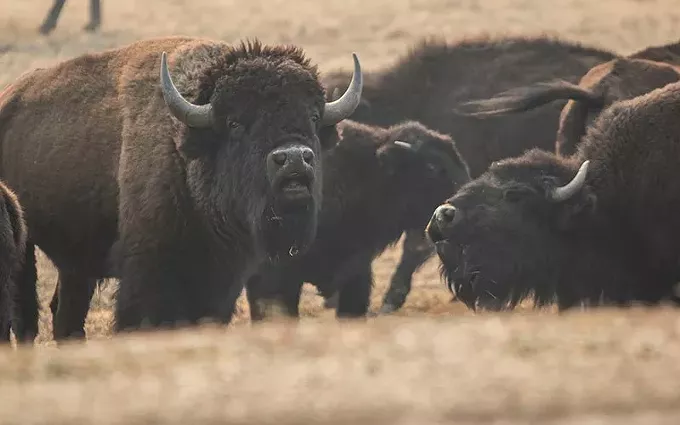
WASHINGTON – State and federal officials have agreed on a plan that includes bringing in volunteer sharpshooters to cut the number of bison on the North Rim of the Grand Canyon.
Lethal removal has long been discussed as a way to reduce the herd, along with hazing and relocation, but the Sept. 25 agreement between the Arizona Game and Fish Department and the National Park Service clears a path for it to begin as soon as next year.
Scott Poppenberger, Flagstaff regional supervisor for the Arizona Game and Fish Department, said “the lethal removal component is a big part of this recent agreement,” and believes that the measures to reduce the population will help provide balance to the damaged ecosystem.
It comes amid growing concerns from the public and the park service about the impact the nonnative bison have on natural resources, and worries that they could pose a danger to park visitors.
The animals, descended from early 20th-century attempts to cross-breed cattle and bison, have proliferated in the Grand Canyon National Park, where they currently cannot be hunted. The goal of the agreement is to reduce the current herd of 400 to 600 bison to as few as 200, which would do less damage to the environment.
Tags: bison , grand canyon , Image
Wednesday, September 9, 2020
Canned, wet cat food donations can be dropped off at the HSSA's main campus, located at 635 W. Roger Rd from 11 a.m. to 4 p.m Monday through Saturday or noon to 4 p.m. on Sunday.
You can also help out the HSSA from the comfort of your home by donating through the shelter's Amazon Wishlist. Just purchase an item from the list and Jeff Bezos' minions will deliver them straight to the HSSA.
HSSA's furbabies thank you for your support. For more information, check out hssaz.org
Monday, June 29, 2020
The U.S. Fish and Wildlife Service on Tuesday designated an area in the Organ Pipe Cactus National Monument, in the turtle’s historic territory in the Rio Sonoyta watershed, as protected.
But that habitat bumps right against the U.S.-Mexico border, where one expert said construction crews “are pulling huge amounts of water out of the aquifer” to work on the border wall.
Critics worry that the pumping will eventually affect the Quitobaquito springs and pond, which the turtles have depended on for what experts think could be thousands of years. The pond sits around 100 yards from the site of the planned border wall.
“They are pulling huge amounts of water out of the aquifer to mix concrete and to spray on the roads to keep dust down, and it’s only a matter of time before the flow that reaches the surface of the spring there fails,” said Randy Serraglio, southwest conservation advocate for the Center for Biological Diversity.
“When that happens, then that’s it. The aquatic habitat dries up and the turtle will die,” Serraglio said.
The border wall is just one issue the turtle faces in the middle of the desert, where Serraglio said over-pumping, water diversion and 20 years of drought conditions also pose threats.
Thursday, June 25, 2020
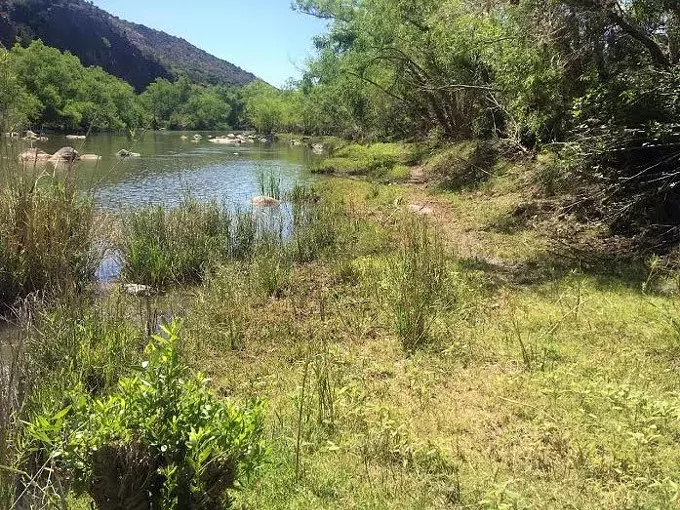
In some ways, the rivers differ drastically. The San Pedro is one of the last undammed rivers in the Southwest, while the Verde has many dams, including Horseshoe and Bartlett northeast of Phoenix. Parts of the Verde are protected under the Wild and Scenic Rivers Act – protections the San Pedro doesn’t share.
But for all the differences, there are many similarities. Both have diverse ecosystems that are home to many endangered wildlife species, including the southwestern willow flycatcher and loach minnow. Both have felt the effects of increased groundwater pumping and cattle grazing. And, just recently, both have been at the center of lawsuits filed to protect each river.
“The story of Arizona rivers is that we have demonstrated many times that we can dry them up, but we haven’t demonstrated that we can save them,” said Sandy Bahr, the director of the Sierra Club’s Grand Canyon Chapter.
In this two-part series, Cronkite News takes a deep dive into these two Arizona rivers and the threats they face.
Part 1: The Verde
At almost 60, Jon Fuller would rather be canoeing the Verde than sitting in a reclining chair. The author of “Verde River Elegy: A Paddling Journey to the River’s End,” Fuller has studied rivers for almost four decades. During his journey down the Verde in 2017, Fuller witnessed cattle grazing along the banks.
“The cows drop their droppings on the campsite, on the river,” he said. He points out the irony of having to carry his own waste, in accordance with the law, while seeing far more waste from what he calls unregulated cattle. Cattle also erode river banks and sandbars, and eat large amounts of streamside vegetation.
“It turns out most wilderness areas have exemptions for cattle grazing, although they should not be in the river corridor themselves, according to the rules the federal government agreed to,” Fuller said. “Yet there they were.”



